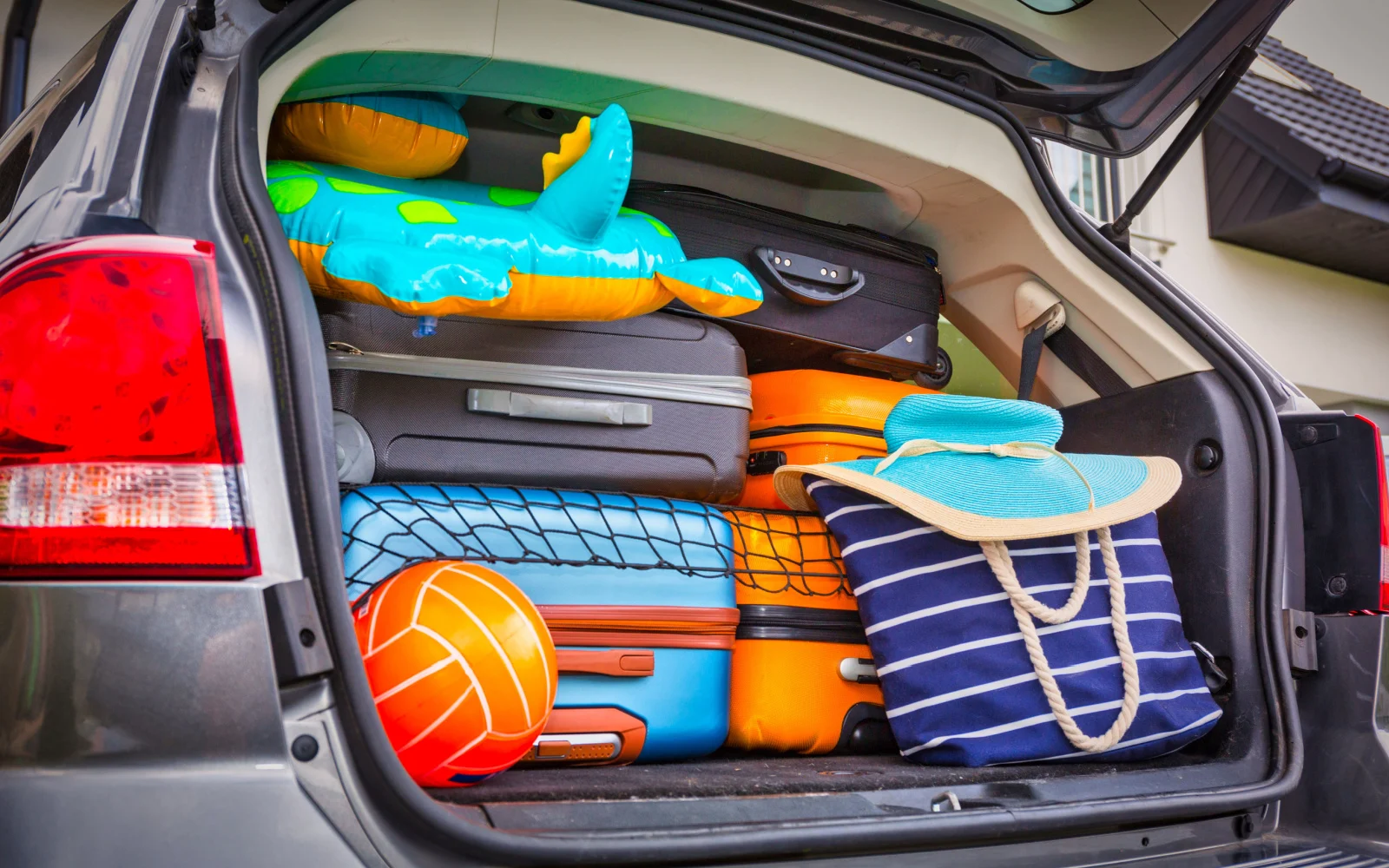Everyone loves a road trip. Well, not everyone. But most people enjoy the calming hum of the tires, the slow pace of sightseeing, and the immersive experience that driving provides – as opposed to fast-paced flying or crowded buses.
The best part about road trips is that they allow you to fully experience an area in a way that jet-setting or even taking the train doesn’t, because you have the freedom to see and do whatever you like in that area.
From your own backyard of Maine or Colorado to the farther-flung Mayan ruins of Mexico, road trips offer you an experience that traditional travel does not. Plus, there’s no rule that says you can’t fly to an area and then road trip through it!
This is one of my favorite ways to see a place, and it takes slow travel to a whole new level. Major heart-eyes emoji. Still, road trips do require a bit more thought and gear than simply hopping on a plane.
Things to Bring on a Road Trip in 2025
If you’re new to road trips or haven’t taken one in a while, here’s a Modern List of Must-Haves.
Basics
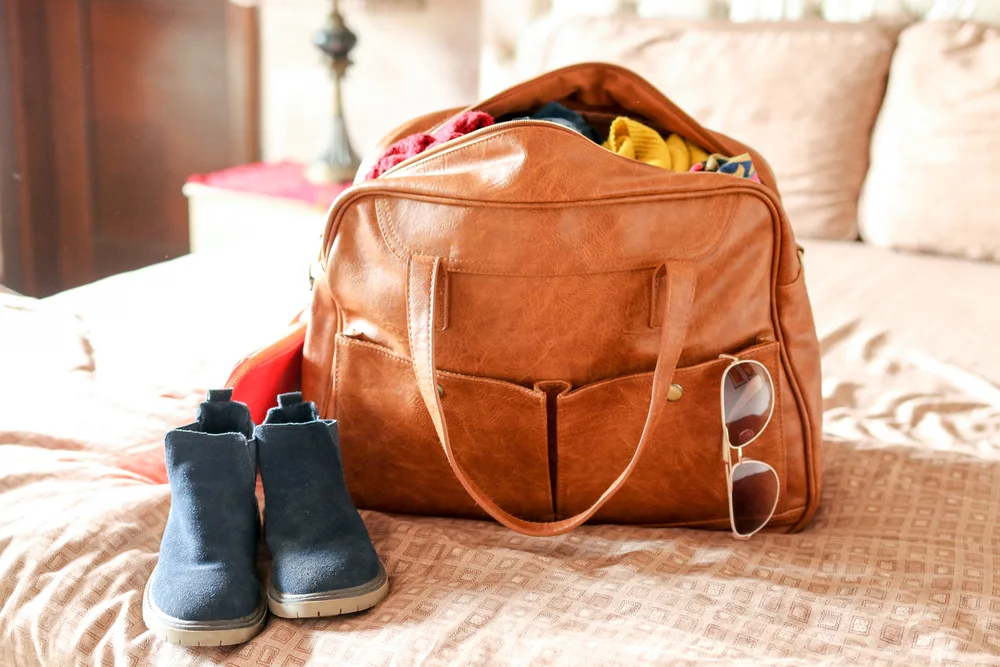
Abeer Sadiq/Shutterstock
Let’s start with the basics, most of which you’ll take with you anywhere you travel:
- Clothing: Plan on the basic indoor, outdoor, and loungewear you’d bring on any journey.
- Boots or tennies: If you’ll do any amount of walking or hiking, be sure to have supportive shoes
- Flip flops: Must-haves for pools, lakes, rivers, and oceans.
- Rain gear: Good for a squall.
- Paper towels or wipes: Good for a spill.
- Shades… and shades: That’s right, sunglasses and sun shades alike. One for your face and one to keep the dash from getting white-hot like the fire of a thousand suns. (Seriously, how??)
Food and Drink
Believe it or not, you burn plenty of calories while driving – and about twice as many if you’re the driver. For that reason, it’s important to stay fed and hydrated.
You can only afford to stop at restaurants so often, whether you judge by time or by money. Don’t plan to make it between meals without snacks and drinks in the car. Instead, pack an assortment of utensils and snack types to keep you going.
- Utensils, travel cup, and water bottle: Appropriate picnic gear makes everyone happier.
- Emergency water: In remote areas, you should have one gallon per person, per day, for three days. Don’t forget pets!
- Snacks and energy bars: Protein is critical when you’re driving.
- Candy: Yes, candy. Even if you’re health-conscious, candy is one of the highest-calorie foods known to humankind. It is also light, portable, and shelf-stable. Should you get stuck somewhere for a while, candy might not make you feel great… but it will keep you energized and last a long time.
Comfort Items
Staying comfortable on the go is a must for road trips. Even if you don’t plan to nap (which you should if you’re driving more than 10 hours, even with a partner), you’ll want somewhere to kick your feet up. The following items will help:
- Pillows: Need we say more?
- Eye masks: These are a lifesaver when napping during the day. If you don’t have one left over from a flight, try this affordable silk option.
- Favorite blankies and stuffies: This is more for the younger set, who need proper preparation before they can fall asleep, especially in unfamiliar environments.
- Scarf: A scarf or shawl is a nice, lightweight way to wrap up comfortably and stay warm without blasting the heat, which can make other passengers uncomfortable. (Also, it’s a great wrap for doggos who get cold when the A/C is on.)
Electronics
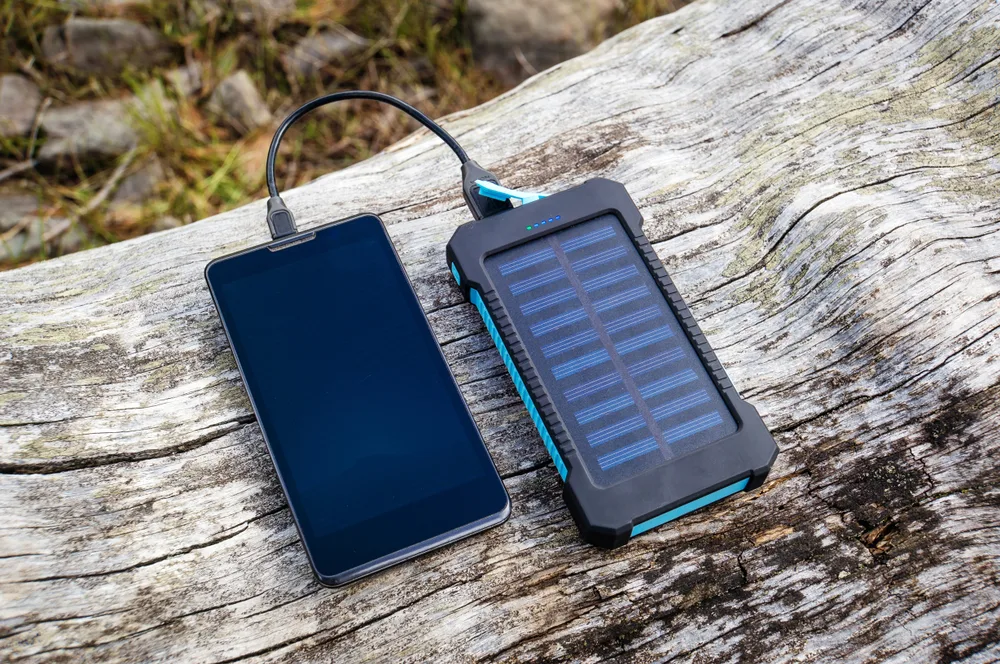
Melnikov Dmitriy/Shutterstock
- Car charger: Make sure it plugs into your specific car and your specific phone.
- Hands-free phone mount: Safety first!
- Solar charger or power bank: These are good in case you need a charge far from civilization.
Navigation and Safety
Staying safe on the road is critical. During many stretches of your drive, you will be far from a hospital and even emergency response help may take some time. I’ll never forget how it felt to watch even the telephone poles and lane lines disappear in Northern British Columbia and know I was truly on my own.
It goes without saying that in such situations, it’s best to be prepared – but even in much more settled areas, you’ll want a few basic supplies:
- First aid kit: Make sure it includes more than just Band-Aids.
- Space blankets: These “blankets,” more properly referred to as thermal blankets, are made of plastic sheeting that reflects heat. Considering “they trap up to 90% of the radiated body heat that would normally be dispersed into the environment,” they can be a literal lifesaver during a breakdown in snowy climes.
- Actual blankets: Although they don’t *sound* as cool as space blankets, regular blankets are quite useful as well. Comfier too.
- Jumper cables: Know how to use them!
- Physical map: GPS is great, but it’s when it goes down, it’s a real bummer. Have paper maps on hand.
- Extra car key: Two different people should keep their keys in a place that goes with you when you leave the vehicle.
- Flares and matches: Remember, the former is useless without the latter.
- Flashlight: This is a must for any glovebox.
- Umbrella: Rain, rain, go away…
- Life Hammer: This two-in-one tool both breaks windows and cuts seatbelts in case of emergency.
Supplies for Remote Areas
If you’re traveling farther afield than most (see: telephone-pole-less Northern British Columbia), you might want a more extreme version of safety gear. That includes:
- Oil and gas: Purchase the oil in bottles and put your gas in a can.
- Coolant: This matters in all seasons, not just summer.
- Wiper Fluid: If you’re traveling at a bug-heavy time, you won’t want to run out!
- Chains and a shovel: Snow is lovely, but not if you can’t manage it!
Documentation
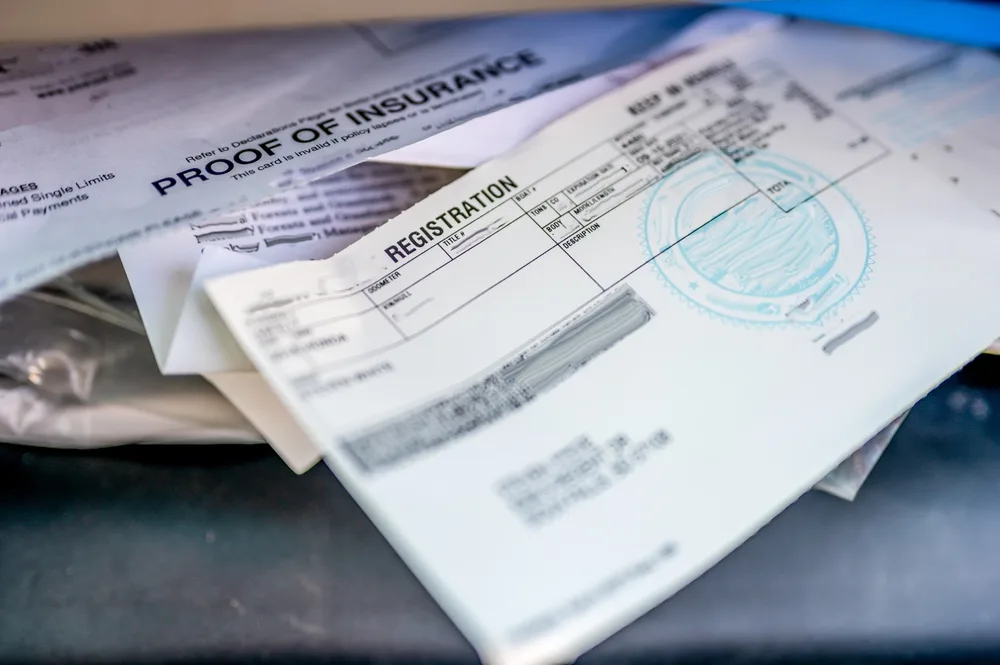
Lost_in_the_Midwest/Shutterstock
Here are the documents you’ll need on a road trip:
- License, registration, and insurance: These should be with you at all times in any car, road-tripping or not.
- AAA card: Very handy for a roadside breakdown, so I suggest purchasing a membership if you don’t already have one.
- Car manual: Many car issues are surprisingly easy to fix, so keep the manual on hand.
- Toll passes: This only applies to some roads. Look ahead of time and buy online to save highway hassle.
Personal Care
- Hand sanitizer: This is handy when you don’t have a working sink (as in half of all gas stations and every outhouse ever).
- Bug spray: My motto? Always. Expect. Bugs.
- Pain killers: Advil and Tylenol are both good to have, especially the latter for children.
- Lotion and ChapStick: I love ChapStick too much, you say? I’m sorry, maybe you don’t love it enough. On a road trip or any other time, it’s important to stay moisturized, especially when you have heat and A/C blasting.
- Stain stick: This is ideal for getting drips and spills out of clothing when there’s nary a washing machine in sight.
- Hair care supplies: Keep hair protected from drying climate control and staticky seats with some leave-in conditioner.
Camping Gear
If you’re camping on your road trip, then you’ll need the basic supplies you’d take on any car-camping trip. Some of these are mandatory (hello, tent) while some are optional. The basics include:
- Tent: We said it was mandatory, remember?
- Sleeping bags: Make sure they’re rated for the temperatures you’ll be sleeping at.
- Pillows: These aren’t strictly speaking necessary for camping, but if you’re traveling in a car, why wouldn’t you?
- Lanterns: At least one is critical for going to the bathroom at night.
- Stove: Make sure to bring extra fuel.
- Food prep station: This is optional, but it’s very handy in campsites without a picnic table, which is the majority.
Entertainment
Any road trip requires entertainment. That’s a LOT of hours just cruising down freeways, highways, and country lanes and beautiful sights only keep you occupied for so long.
In fact, it can be dangerous for drivers not to occupy themselves, because they zone out. Highway hypnosis is a real thing that can have deadly consequences, but entertainment can help you avoid it (along with proper sleep).
Here are just a few of our favorite ways to keep yourself, your partner, your friends, and your family occupied on the road.
- Playlists: Your favorite tunes are always good to pass the time, especially if they get you singing along.
- Audiobooks: From novels to deep dives into your favorite nonfic topics, audiobooks are a good way to keep yourself occupied hour after hour.
- Podcasts: Kind of like short audiobooks, podcasts also provide lots of binge-worthy entertainment.
- Tablet games: These are not for the driver (LOL but not LOL), but rather for passengers. However, word games can work for everyone in the car.
- Travel journals: Filling out a travel journal is a great way for those who aren’t driving and don’t get roadsick to eat up the hours.
- Mad Libs: It’s a classic for a reason.
- Art supplies: These are a great tool for keeping little ones occupied without shoving a screen in their face all day long.
Frequently Asked Questions
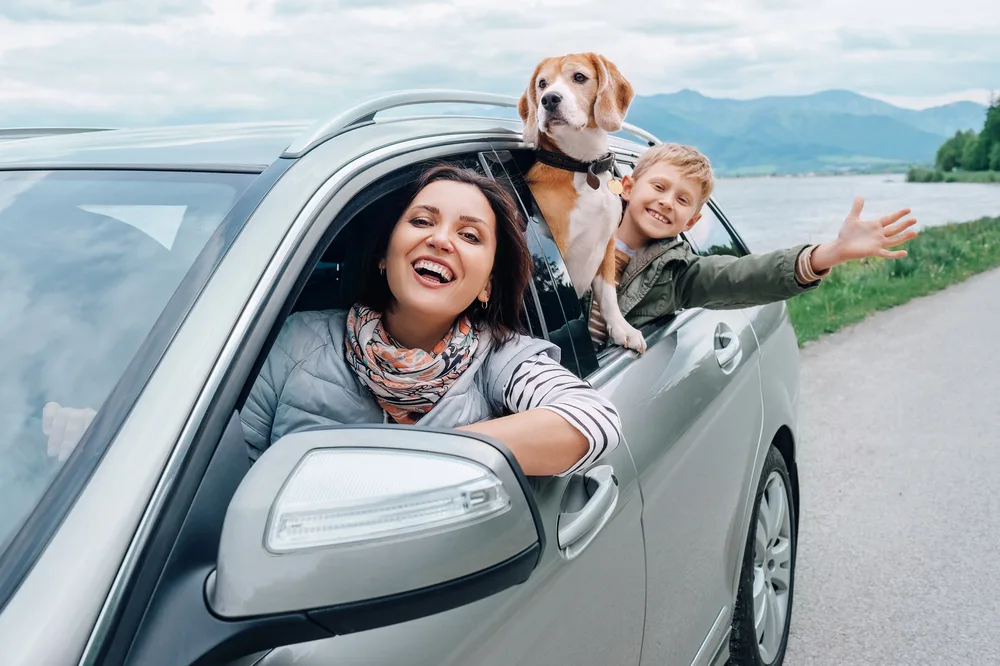
Soloviova Liudmyla/Shutterstock
How is a road trip different in a foreign country?
The main way in which road trips are different in foreign countries is that you simply can’t bring the same amount of gear as you would when driving from your own home. It’s too expensive to get it on the plane, so unless you already live in Europe, you’ll need a mindset shift.
Of course, you can drive to several countries from your own American front door. These include Canada, Mexico, and Central or even South America – provided you take major safety precautions and plan for the expense of shipping your car from Panama to Colombia. If this is your plan, you can ignore the following advice.
The main way to think about road-tripping in a country to which you’ve flown is “backpacking with a car.” You still need to fit everything into your backpack, but you can get from A to B in comfort and style.
How many stops should I plan per day?
Plan to stop often enough to go to the bathroom, eat well, and get some fresh drinks. Every 2 hours is usually a good amount, because that’s when people need to relieve themselves and re-up their protein intake.
How many hours should I travel each day?
The number of hours you put in each day depends on how many drivers there are. If it’s just you, don’t do more than 6 or so – and even that is a lot to do day after day. However, if you have a companion or multiple, then you can safely drive more like 8 or 10 hours.
Unless you’re really trying to get somewhere, save your driving for the daytime. That way you get to enjoy the scenery through which you’re passing and get a good feel for the area.
Should I plan to nap?
If you and your companions are driving more than 8 to 10 hours, then everyone in the car should plan to shut their eyes for a while to stay fresh, especially if their shift hasn’t come yet.
Road Trips FTW
And that’s it! Now that you know how to pack most effectively for a trip de road, you’re set up for success. All that’s left now is to pick your dates and go!



